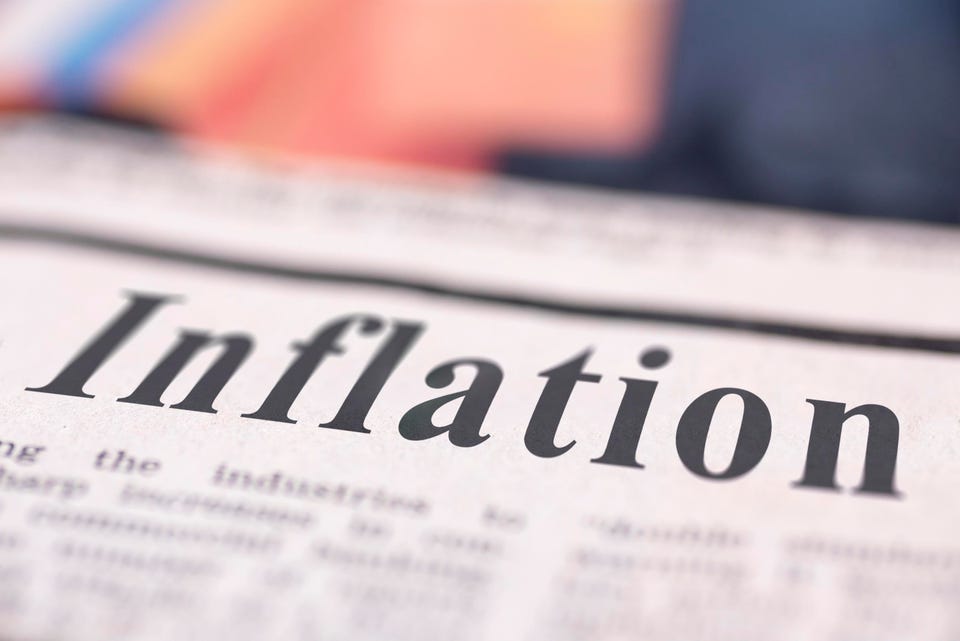Enterprise Tech Inflation’s Impact On Data Centers Tom Coughlin Contributor Opinions expressed by Forbes Contributors are their own. New! Follow this author to improve your content experience. Got it! Jul 5, 2022, 07:34pm EDT | Share to Facebook Share to Twitter Share to Linkedin Inflation written newspaper close up shot to the text.
getty I have been thinking recently about what the impact of historically high inflation rates and interest rates will have on data center growth and consequently digital storage and memory demand. First let’s look at the recent US inflation and interest rate announcements and then talk about their possible impact on data centers. According to the US Bureau of Labor Statistics, “Annual inflation rate in the US unexpectedly accelerated to 8.
6% in May of 2022, the highest since December of 1981 and compared to market forecasts of 8. 3%. Energy prices rose 34.
6%, the most since September of 2005, due to gasoline (48. 7%), fuel oil (106. 7%, the largest increase on record), electricity (12%, the largest 12-month increase since August 2006), and natural gas (30.
2%, the most since July 2008). Food costs surged 10. 1%, the first increase of 10% or more since March 1981.
Big increases were seen in prices of meats, poultry, fish, and eggs (14. 2%). Other increases were also seen in cost of shelter (5.
5%, the most since February 1991), household furnishings and operations (8. 9%), used cars and trucks (16. 1%) and airline fares (37.
8%) while cost of new vehicles eased slightly (12. 6% vs 13. 2%).
” There are several factors leading to this inflation, including supply chain problems and shortages of critical components and infrastructure (e. g. shortages in fuel refining capacity) as well as government spending in order to try and avoid a major recession during the COVID pandemic.
Projections for the annual inflation rate in June are similar to the May numbers. The Federal Reserve has responded to the sharp increase in inflation by increasing interest rates. On June 15 it increased interest rates by 0.
75 percent, its third hike this year and the largest since 1994. MORE FOR YOU The 5 Biggest Technology Trends In 2022 ‘Enthusiastic Entrepreneurs’: Pre-IPO Statements On Profitability Prove To Be Larger Than Real Life The 7 Biggest Artificial Intelligence (AI) Trends In 2022 Financial analysts point out that these interest rate hikes could push the US economy into a recession. Just after this announcement the S&P 500 Stock Index plummeted by 20% from its peak in January 2022.
Although the market has recovered some by July 1, there is still significant concern about the health of the US economy. At the same time that the economy may be facing spending pressures, demand for the storage and processing of digital information is increasing and is a key part of the digital transformation underway in many companies. Continuing the digitization will be critical to the success and increasing business opportunities for these companies.
What does this mean for digital storage and memory demand, particularly for enterprise and data center applications? If the economy goes into a significant recession, many companies will have less income and this will put pressure on spending plans, including spending on storage and memory. This will impact storage and memory companies and we might be seeing some early signs in softening demand and lower prices for various memory technologies (although this may also be due to new memory production capacity coming on line and swelling supply). However, many storage and memory end users will want to continue their digitization plans, since they see this as the future of their companies.
The result could be an even stronger push to spend money to acquire additional technical capabilities as operating expenses, used only when needed, rather than capital expenses. This could drive further demand for cloud storage and other services. In addition, the expansion of remote work during the pandemic and continuing into the future for many professional workers (with at least a couple of days a week working away from the office) makes cloud-based services, whether using private or public clouds, essential for many businesses.
Stephen Daniel in the May 2022 Digital Storage Technology Newsletter said that, “Starting in 2022, the number of employees working from home at some time during the week will increase…driven by a more informed realization of the benefits of work from home, as well as improvements and changes to the home working environment and supporting infrastructure. By the end of 2026, the number of employees working fully or partially from home will have increased by 35% over the Pre COVID-19 level” Another important factor that could continue to drive the use of on-line meeting services, is the higher cost and logistics issues with travel in today’s post-COVID and post-Ukrane invasion world. Thus, although cloud storage and memory spending could exhibit shorter term reductions, it should be one of the fastest technology areas to rebound to meet the needs of modern businesses.
With the rise of efficient data management for multi-cloud and multi-site data, spending on this part of the storage and memory business will have the fastest return on investment. Follow me on Twitter or LinkedIn . Check out my website .
Tom Coughlin Editorial Standards Print Reprints & Permissions.
From: forbes
URL: https://www.forbes.com/sites/tomcoughlin/2022/07/05/inflations-impact-on-data-centers/



